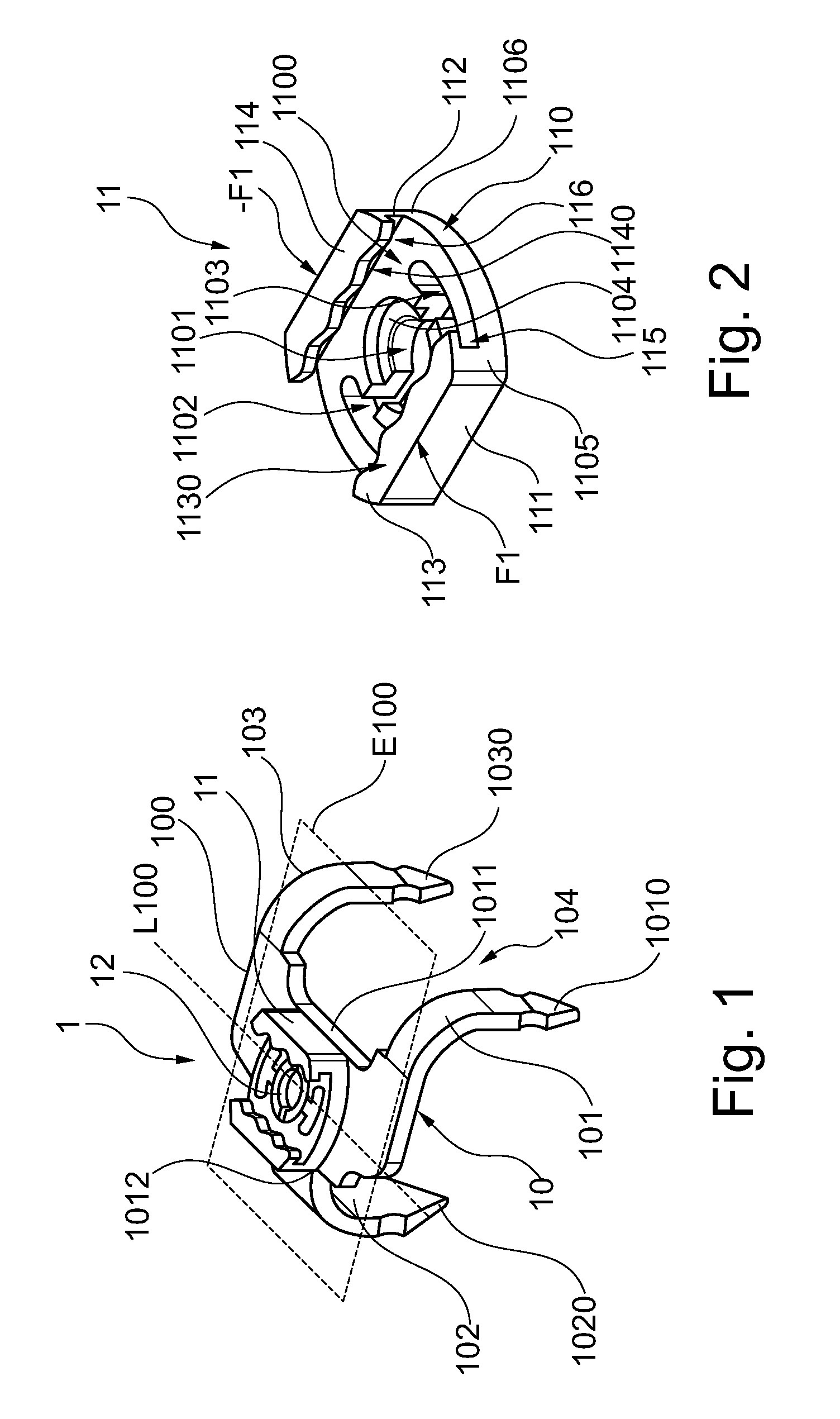Multi-directional thorax wall stabilisation
a multi-directional, thoracic wall technology, applied in the field of implants, can solve the problems of large surgical trauma, patient remains, and relatively large procedure, and achieve the effect of reducing the risk of fracture, and improving the stability of the thoracic wall
- Summary
- Abstract
- Description
- Claims
- Application Information
AI Technical Summary
Benefits of technology
Problems solved by technology
Method used
Image
Examples
Embodiment Construction
[0035]FIG. 1 shows a perspective view of a first embodiment of a first implant 1 in accordance with the present invention.
[0036]The first implant 1 has a clamp 10. This comprises a fillet 100 and prongs 101, 102, 103 extending from both sides of the fillet 100. The first prong 101 and the third prong 103 are (in the longitudinal direction L100 of the fillet) spaced apart from each other on a first side 1001 of the fillet 100, the second prong 102 is disposed on a second side 1002 opposite the first side 1001. The prongs 101, 102, 103 extend outwardly from the fillet 100 and roughly perpendicularly to the longitudinal axis L100 of the fillet 100 and are bent down and out from the plane E100 formed by the fillet 100. The prongs 101, 102 and 103 are disposed so as to be offset from one another on the fillet 100, relative to the longitudinal axis L100 of the fillet 100. In this connection, the second prong 102 is disposed at the level of the gap 104 between the first prong 101 and the t...
PUM
 Login to View More
Login to View More Abstract
Description
Claims
Application Information
 Login to View More
Login to View More - Generate Ideas
- Intellectual Property
- Life Sciences
- Materials
- Tech Scout
- Unparalleled Data Quality
- Higher Quality Content
- 60% Fewer Hallucinations
Browse by: Latest US Patents, China's latest patents, Technical Efficacy Thesaurus, Application Domain, Technology Topic, Popular Technical Reports.
© 2025 PatSnap. All rights reserved.Legal|Privacy policy|Modern Slavery Act Transparency Statement|Sitemap|About US| Contact US: help@patsnap.com



